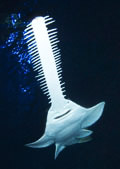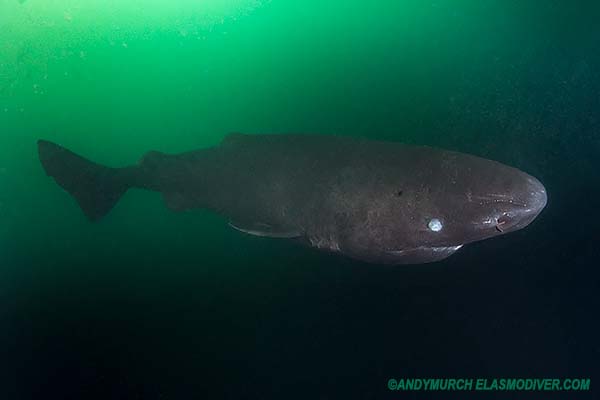|
|
|
SHARK INFO |
|
SHARK |
|
SHARK EVOLUTION |
|
|
|
SHARK DIVING |
|
SHARK DIVING 101 |
|
|
|
CONSERVATION |
|
|
|
PHOTOGRAPHY |
|
SHARK PHOTO TIPS |
|
|
|
RESOURCES |
|
|
|
WEB STUFF |
|
WHAT IS ELASMODIVER? Not just a huge collection of Shark Pictures: Elasmodiver.com contains images of sharks, skates, rays, and a few chimaera's from around the world. Elasmodiver began as a simple web based shark field guide to help divers find the best places to encounter the different species of sharks and rays that live in shallow water but it has slowly evolved into a much larger project containing information on all aspects of shark diving and shark photography. There are now more than 10,000 shark pictures and sections on shark evolution, biology, and conservation. There is a large library of reviewed shark books, a constantly updated shark taxonomy page, a monster list of shark links, and deeper in the site there are numerous articles and stories about shark encounters. Elasmodiver is now so difficult to check for updates, that new information and pictures are listed on an Elasmodiver Updates Page that can be accessed here:
|
|
_ |
Pacific Sleeper Shark |
||
|
View more Pacific Sleeper Shark Images in the Shark Picture Database Common Names: Pacific Sleeper Shark, Mud Shark. Latin Name: Somniosus pacificus Family: Somniosidae - Sleeper sharks. Identification: A large, heavy bodied shark. Very low first and second dorsal fins set well back on body. No dorsal spines. Snout broadly rounded. A network of small white pores (probably electro-receptors or pressure sensors) are present around the snout and behind the eyes. Light blue eyes are often covered by a parasite. Dorsal coloration dark reddish-brown. No counter-shading. Ventrum uniformly brown. A small spiracle is present towards the back of the head; well behind and above eye level.
Size: Maximum recorded length is 440cm but there are unconfirmed reports of 7m individuals that have been seen by deepwater submersibles. If those reports are correct, the Pacific sleeper shark would be the fifth largest shark; slightly smaller than its Atlantic cousin the Greenland shark. Estimated size at birth is 40-65cm. Habitat: Boreal and temperate oceans on continental shelves and slopes. A mostly demersal species. Adults are usually found close to the substrate, whereas neonates are often caught in mid-water implying that they inhabit this region until the grow larger and settle onto the bottom. The Pacific sleeper shark is confined to deep water in the warmer parts of its range. It is known to migrate vertically after dark, occasionally entering shallow bays at night in polar regions. One individual was found trapped in a tide pool. Maximum depth at least 2000m. Distribution: North Pacific. Found from Japan in the west, through the Kuril Islands, Sea of Okhotsk, Bering Sea, Chukchi Sea, Coastal Alaska and southward as far as Baja California. Reports of Pacific sleeper sharks from the southern hemisphere are likely misidentifications of Somniosus antarcticus. Its distribution above the arctic circle is unclear. Reports may be attributed to S. microcephalus. Diet and feeding behavior: Feeds on flatfishes, Pacific salmon, rockfish, harbor seals, octopi, squid, crabs, tritons, and carrion. It is unclear if the Pacific sleeper shark is capable of catching fast moving prey or if it scavenges for carcasses that have fallen to the bottom. ts long head and oral cavity imply that it has a powerful suction capability but the use of this attribute has not been observed in the field. Reproduction: Ovoviviparous. Pregnant females have yet to be found. This suggests that either pregnant females reside at great depth (below the range of commercial fisheries), or Pacific sleeper sharks have an extremely low fecundity. Conservation Status:
Listed as Data
Deficient by the IUCN. However, this species is taken as bycatch in several
fisheries and usually discarded. It is notably affected by bottom trawl
fisheries in the western Bering Sea (Orlov 2005), by longline fisheries for
sablefish and Pacific halibut in the eastern North Pacific (Courtney et al.
2006a, b). Incidental catch in US waters in 2006 was 435 mt, in some years it
has reached ~ 1,400 mt (Courtney et al. 2006a, b). Photographs: Port Fidalgo, Prince William Sound, Alaska.
Similar species: The Pacific sleep shark's range may overlap with the Greenland Shark inside the arctic circle. However, it is unclear if the Pacific sleeper is present within that region. Reaction to divers: Although its nightly vertical migrations make contact with divers feasible, there are no accounts of it being encountered. During a catch and release experimental dive in Port Fidalgo, a 4m specimen showed no interest in the diver (me). Once released, it immediately swum back into deep water. Diving logistics: None. Please send any reports of encounters by divers to elasmodiver. References:
|
||
|
|
||
























